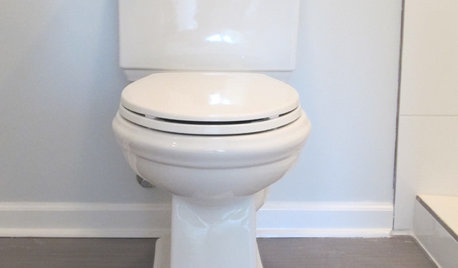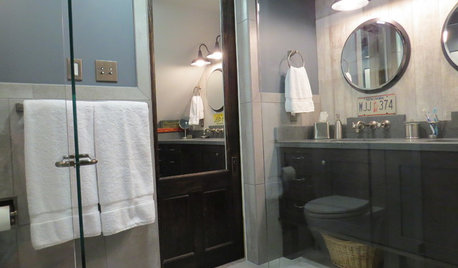root control in toilet drains
Related Stories

TRADITIONAL ARCHITECTURERoots of Style: Pueblo Revival Architecture Welcomes Modern Life
Centuries-old details of adobe construction still appeal in the desert Southwest, adapted to today's tastes
Full Story
BATHROOM DESIGNHow to Place Shower Controls for Bathing Bliss
Body jets, handhelds and showerheads are only as good as their placement. Here's how to get it right
Full Story
HEALTHY HOMEWhat to Know About Controlling Dust During Remodeling
You can't eliminate dust during construction, but there are ways to contain and remove as much of it as possible
Full Story
HOME TECHMeet the New Super Toilets
With features you never knew you needed, these toilets may make it hard to go back to standard commodes
Full Story
BATHROOM DESIGNHow to Hide the Toilet
If you don’t want your toilet to be the main feature of your bathroom, here’s how to let it take a backseat in your bath’s decor
Full Story
BATHROOM DESIGNHow to Install a Toilet in an Hour
Putting a new commode in a bathroom or powder room yourself saves plumber fees, and it's less scary than you might expect
Full Story
BATHROOM DESIGNConvert Your Tub Space Into a Shower — Waterproofing and Drainage
Step 4 in swapping your tub for a sleek new shower: Pick your waterproofing materials and drain, and don't forget to test
Full Story
LANDSCAPE DESIGN8 Modern-Day Moats That Float Our Boats
See how a simple water barrier with ancient roots can make for an eye-catching contemporary garden feature
Full Story
BATHROOM DESIGNDesign an Easy-Clean Bathroom
These ingenious strategies and sleek designs for the sink, tub, shower and toilet help your bathroom practically clean itself
Full Story
BATHROOM DESIGNSee the Clever Tricks That Opened Up This Master Bathroom
A recessed toilet paper holder and cabinets, diagonal large-format tiles, frameless glass and more helped maximize every inch of the space
Full StoryMore Discussions








User
daninthedirt (USDA 9a, HZ9, CentTX, Sunset z30, Cfa)Original Author
Related Professionals
Parkland Home Remodeling · Phillipsburg Kitchen & Bathroom Remodelers · Cedar Hill General Contractors · Euclid General Contractors · Linton Hall General Contractors · Norridge General Contractors · Seal Beach General Contractors · Solon General Contractors · Palm River-Clair Mel General Contractors · Aurora Painters · Hutto Painters · Albany Painters · Beach Park Painters · Greenlawn Painters · Inver Grove Heights Paintersklem1
daninthedirt (USDA 9a, HZ9, CentTX, Sunset z30, Cfa)Original Author
live_wire_oak
live_wire_oak
graywings123
daninthedirt (USDA 9a, HZ9, CentTX, Sunset z30, Cfa)Original Author
User
daninthedirt (USDA 9a, HZ9, CentTX, Sunset z30, Cfa)Original Author
rgress
apg4